
views
Tasting Chocolate

Give yourself time to enjoy it. Don’t waste a good chocolate bar by scarfing it down so quickly you don’t even really taste it. Take some time out of your day to sit down and mindfully enjoy each bite. Sit down somewhere where you’re comfortable and won’t be interrupted. Curl up in an armchair with some nice music playing, or sit at your kitchen table looking out at the backyard — whatever makes you feel cozy! Some experts recommend not having any distractions whatsoever, including music, so that you can completely dedicate your senses to tasting the chocolate.

Have a clean palate. To full experience the chocolate’s flavor, start with a clean palate that doesn’t contain any residual flavors from your past meals. If your mouth still tastes like your previous meal, cleanse your palate with some apple, bread, or sparkling water. If you’re having a few different types of chocolate, have a glass of sparkling water nearby so that you can sip it and cleanse your palate in between chocolates. It’s helpful to wait a while between tasting different chocolates so that the flavors don’t mix on your palate. While waiting to try the next chocolate you can have a sip of sparkling water and make some tasting notes.

Take a few deep breaths and quiet your mind. When your mind is focused only on eating the chocolate, you’ll notice things you’ve never noticed before, like the textures and variety of tastes in just one piece.

Pay attention to how the chocolate looks. Once you’ve quieted your mind, turn your attention to the chocolate’s appearance. Admire its glossy exterior, and any colors or decorations it may have on it.
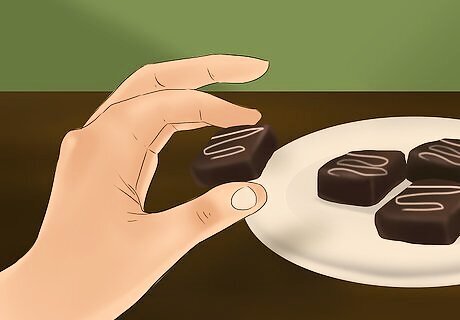
Feel the chocolate. Run your fingers gently over the chocolate, paying attention to its texture. It may be smooth, chunky, or rough, for example. If the chocolate feels cold, wait to eat it until it’s room temperature. The colder the chocolate is, the more difficult it will be to taste all of its flavors.

Smell the chocolate. Hold the chocolate up to your nose and take a deep inhale while closing your eyes. Cup your other hand over the chocolate as you do this so that you can really get a sense of how the chocolate smells. If you’re eating a chocolate bar, now is the time to snap a piece off from it. This will release more of its chocolatey smell.
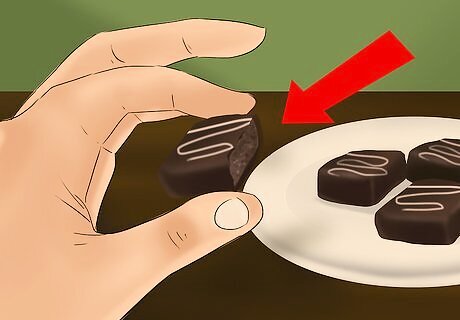
Bite into the chocolate. If it’s a truffle, bite the truffle in half. If it’s been kept at the right temperature, the truffle should snap upon being bitten. You can use your teeth and tongue to break the chocolate into small pieces and spread them across your tongue. This is more commonly done with truffles than chocolate bars. With a chocolate bar, you may just want to hold it to the roof of your mouth and let it melt for up to 30 seconds before moving it around your mouth.

Move the chocolate around your mouth. Let the chocolate sit on your tongue, then press it up to the roof of your mouth and experience the flavors as the chocolate melts. Many chocolates move through a variety of flavors as they melt. As you move the chocolate around your mouth, pay attention to how it tastes. It may be sweet, salty, bitter, acidic, umami, or a combination. For example, a mango chilli truffle melted in the middle of your tongue might start with a strong mango flavor, then move to a tequila flavor, then chilli, with the chilli spice hitting the back of your throat as you swallow the chocolate.

Use your nose. Inhale deeply through your nose as the chocolate melts on your tongue. As you inhale, imagine you are making space between your nose and the roof of your mouth (your palate). As you do this, you may notice different flavors, or at least stronger ones. Inhaling in this way is called “aerating the palate” and helps stimulate your sense of smell at the back of your throat.

Reflect. Before taking the next bite, give yourself a moment to feel the chocolate’s effect on your body. Do you feel a little mood boost? A bit of an increased heart rate? Maybe you’re smiling because it tastes so nice!

Keep a tasting record. If you regularly try different types of chocolate, it’s useful to keep a record of what you’ve tried. Write down your thoughts in a notebook or text document. Do this while your memory of the chocolate is still fresh. Buy a nice notebook to write your tasting notes in. If you regularly taste other types of things as well (e.g., wine and coffee), you could buy a notebook with multiple sections. Some shops even sell chocolate tasting notebooks.
Pairing Chocolate with Drinks

Look for similar tasting notes. A quick way to decide on a chocolate-drink pairing is to look at the tasting notes for both the chocolate and the drink. This goes for tea or alcohol, which are both commonly paired with chocolate. Examples: If you’re having a cup of tea with floral notes (e.g. jasmine green tea or a floral oolong), aim for a dark chocolate with floral notes. If you’re having a Dragonwell tea or another type of tea with a nutty flavor, aim for chocolate that also has nutty notes — for example, an almond bark or dark chocolate with nutty tasting notes. Earl Grey tea has pronounced citrusy notes and goes well with dark chocolate that also contains citrusy notes.

Experiment with flavor combinations. Pairing drinks and chocolates with matching tasting notes to enhance the flavors of both the chocolate and the drink is a great way to start, but you can also contrast flavors and complement them. Earthy teas (pu-erh, for example) go nicely with floral dark chocolates, while spicy teas such as Masala Chai black tea go well with milk or white chocolate. Combine teas with “toasty” notes (e.g. Hojicha green tea or Wuyi Oolong) with sweet milk chocolate or chocolate caramels.

Pair chocolate with tea. Light teas go nicely with fruity, spiced, or cream-based chocolates. Fruity teas go well with simple dark chocolates. Dark teas go well with most types of chocolate. The pairing possibilities are endless, but here are some more suggestions: Pair white chocolate with Matcha, Sencha, and Dragonwell teas. Pair milk chocolate with Dragonwell, Sencha, Darjeeling, Oolong, and Masala Chai teas. Pair dark chocolate with Assam, Keemun, Gyokuro, Oolong, Match, and Earl Grey teas.

Pair chocolate with coffee. When choosing which chocolates to pair with which coffees, consider the flavor profiles of both the chocolate and the coffee. You can do this with black coffee or any milky coffee drink of your choice. Espresso roasts go well with dark chocolates, caramel chocolates, and chocolates with hints of nutmeg and cinnamon. French roasts go nicely with dark chocolates, chocolates with roasted almonds or hazelnuts, and any chocolates containing caramelized sugar. Dark roasts and dark chocolates generally go well together.

Make a hot drinking chocolate. You can make a wonderful hot drinking chocolate by melting a few squares of dark chocolate into some whole fat milk. For the best flavor, make sure the milk is whole fat and that it’s lightly steaming (not boiling!) before you put the chocolate in. If the dark chocolate alone is too strong, cut it with a few squares of milk chocolate. Note that combining chocolate with milk reduces the health benefits of chocolate, as the milk reduces the antioxidant abilities of the cocoa solids.
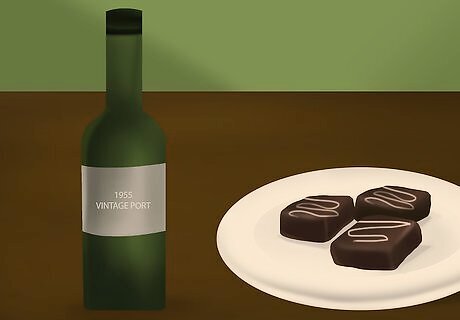
Pair chocolate with a sweet wine. Chocolate’s strong flavors will make dry, light red or white table wines taste like nothing. Experts recommend pairing chocolate with a sweeter wine with an equally intense flavor that doesn’t buckle under the chocolate’s intensity, and some even recommend that the wine be even sweeter than the chocolate. Dessert wines like vintage-style ports, sweet sparklers,and robust reds are good choices, with the port being a classic choice. Banyuls is a popular wine choice for pairing with both milk and dark chocolate. Recioto, Madeira, Barolo Chinato, Fernet, and Syrah wines are also popular pairing choices. A chocolate that is sweeter than your wine is going to make your wine be perceived as less sweet. So, the first rule of thumb is to make sure that your wine is as sweet or sweeter than your chocolate. If you have a darker chocolate, a darker red wine is probably a good option. If you have milk or white chocolate, on the other hand, a light red wine or a rose wine are probably better matches.

Pair aged spirits with flavored chocolates. Spirits like whiskey and bourbon are generally aged in oak barrels that lend hints of caramel, vanilla, nuts, and fruits to the drink. Pair these spirits with chocolates containing the same flavors to enhance them. When pairing scotch with chocolates, consider the flavor profile of the scotch that you’re drinking before choosing your chocolate. A plan dark chocolate with little sugar or added flavors will go well with a mildly smokey scotch.
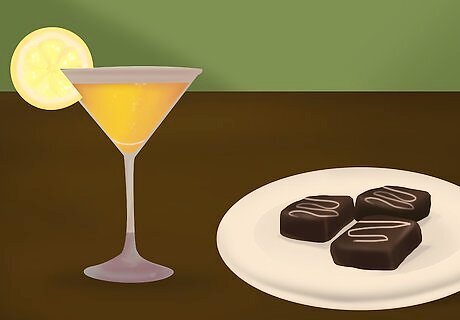
Consider classic cocktails when pairing chocolate with alcohol. One type of Old-fashoined cocktail contains bourbon, muddled cherry, and orange. Pair bourbon with a citrusy or cherry-filled chocolates to recreate that flavor combination. Rum goes well with chocolates that mimic the flavors of Tiki drinks such as tropical fruits, lime, ginger, nutmeg, allspice, and almond syrup. Aged rum with marzipan chocolates is also a great pairing. A popular drink in the wintertime is a Peppermint Patty, which combines peppermint schnapps with hot chocolate. Sip a minty schnapps with a simple dark chocolate to recreate the flavor. If you don’t drink alcohol, you can replicate this with a strong mint tea.
Choosing Chocolate
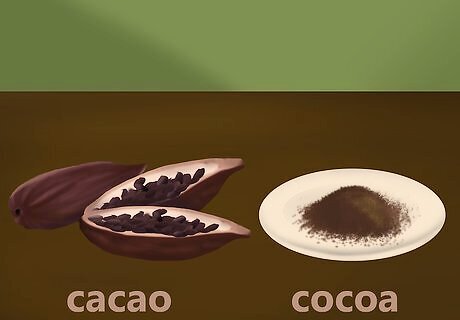
Know the difference between cacao and cocoa. Cacao is the plant from which cacao beans (also called cocoa beans) are cultivated. Cocoa is the powder made from roasted, husked, and ground cacao beans, with most of the fat removed. Cacao beans are typically roasted and processed to make the solid candy, chocolate. Raw varieties of chocolate do exist too, however, and these are the healthiest.
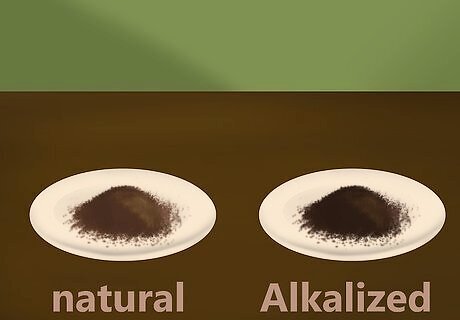
Choose chocolates that contain natural cocoa powder over alkalized powder. The alkalization process removes many of the nutrients contained in cocoa. Alkalized cocoa powder is also referred to as “Dutched”, “Dutch Process”, or “European Style” cocoa powder. It’s powder that has been washed with a solution that neutralizes its acidity. Alkalized powder is often darker than natural cocoa powder. Alkalized cocoa powder often has a deeper, earthier chocolate flavor compared to the more mild, fruity, acidic flavor of natural cocoa.

Eat mostly dark chocolate. Dark chocolate is the healthiest type of chocolate as it contains the most cocoa solids, which contain flavonols, which are compounds with antioxidant and anti-inflammatory properties. A study testing the health benefits of 70% dark chocolate found that it reduced blood sugar, lowered bad cholesterol, and increased good cholesterol. Another study found that it also lowered blood pressure. Other studies have suggested that chocolate reduces the risk of blood clots, helps improve eyesight, boosts moods (no surprise there), and improves cognitive performance in the elderly.
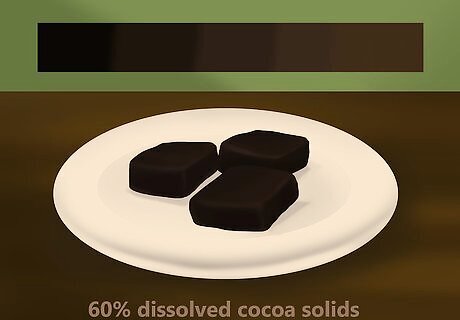
Aim for 60% dissolved cocoa solids and up. The darker the chocolate, the higher its flavonoid content. Higher flavonoids means higher levels of antioxidants, and thus greater health benefits.

Choose chocolate that is made from cocoa butter. Avoid chocolate made from fats like palm oil and coconut oil. Cocoa butter also contains saturated fat, but it doesn’t affect cholesterol in the same way as the saturated fat in coconut oil and palm oil.
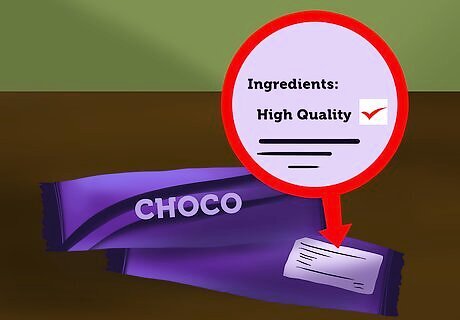
Seek high-quality ingredients. Aim for organic chocolates that are made by fair trade-certified producers. This not only ensures high-quality ingredients, but that the farmers and workers are fairly compensated for their work. Shade-grown rainforest chocolate that has been allowed to naturally ripen is a safe choice for good-tasting, sustainable chocolate. Fair trade chocolates will usually say so on the packaging. If you’re unsure, check the Fair Trade USA website for a list of all Fair Trade chocolate producers.

Buy glossy chocolate. High-quality chocolate will be brown or dark brown, and glossy. IF it’s greyish or has white spots or small holes on the surface, don’t buy it.
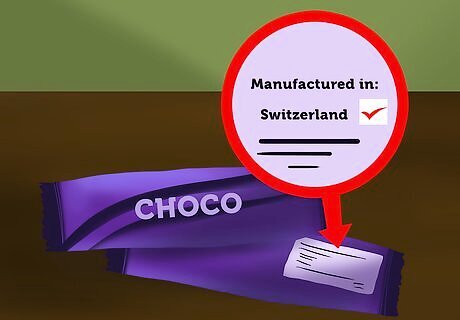
Pay attention to where your chocolate comes from. In addition to seeking chocolate from Fair Trade, sustainable producers, pay attention to which country it comes from. European and South American brands are often good choices. Swiss, Belgian, British, and German chocolates are universally famous. Dark single-origin chocolates from Ecuador are also popular.

Support local artisans. While grocery stores do carry some high-quality Fair Trade brands of dark chocolate, you’re likely to find a more exciting selection from your local chocolatiers. Do a search online to find chocolatiers near you!




















Comments
0 comment